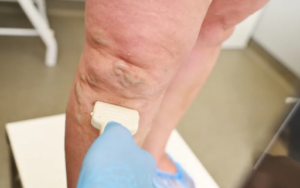Understanding Lymphedema Stages in 2025: Symptoms, Progression, and Treatment

People usually discover the existence of lymphedema when they experience swelling in their body parts because this medical condition remains unknown to others before personal diagnosis.
Lymphedema stages proceeds along several stages wherein patients encounter distinct obstacles and signs.
Knowing how lymphedema shows itself during its early stages, along with recognizing its expanding symptoms, enables prompt medical care and suitable treatment methods.
A detailed guide aims to simplify the lymphedema progression stages for instant identification and treatment of this condition.
Join us to explore the dimensions of lymphedema knowledge in this article…
Stages of Lymphedema
Proper lymphedema stage recognition enables healthcare providers to treat and control this condition successfully. All lymphedema stages have distinct characteristics, as listed in the following order:
Stage 0: Latency or Subclinical Stage
When in this stage, patients should start receiving therapy immediately.
- Though the lymphatic system remains damaged, no visible swelling is present during this phase.
- During this phase, people usually experience either heaviness or a feeling of their limbs being tight.
- The main goal of management consists of recognizing lymphedema early and implementing preventive methods to stop its progression.
Stage 1: Mild Stage
- Lymphedema in this stage causes soft, swollen areas in the skin.
It is well-defined and shows its worst during the evening hours. - Lower limb elevation alongside rest leads to the reduction of swelling.
- Patients benefit from wearing compression garments together with Lymphatic Drainage Techniques as well as performing exercise.
Stage 2: Moderate Stage
- The population experiences an ongoing swell that fails to decrease noticeably when elevating the affected area.
- The symptoms include heavy feelings in limbs together with fibrosis or toughening of the skin.
- Advanced compression techniques, meticulous skin care, and physical therapy with a Certified Lymphatic Drainage Provider.
Stage 3: Severe Stage
- Significant skin changes, which include both thickening and the development of wart-like structures, accompany this stage, together with extreme swelling.
- Impaired movement, together with a higher susceptibility to infections, represents the identified symptoms.
- Special interventions will manage symptoms and teach patients control techniques for a better quality of life.
The Lymphedema Treatment at Vein Center in Arizona Will Help You!
The lymphedema treatment service at Vein Center in Arizona delivers customized care options to patients. Our approach includes:
- Therapists of Vein Center in Arizona possess advanced skills to execute superior lymphatic drainage technique® as well as training patients on proper exercises and compression garment fitting.
- Our practice recognizes that lymphedema manifestations differ between patients. Treatment plans are made by our team to address patients’ requirements throughout every phase of lymphedema.
- Our practice delivers education along with support because we want our patients to acquire essential knowledge and useful tools for effective condition management. The team conducts a lesson-based education phase that connects patients to self-care abilities while giving ongoing post-treatment support.
The selection of Vein Center in Arizona for lymphedema treatment enables patients to access specialized medical care from healthcare providers who maintain a commitment to both their medical well-being and quality of life improvement.

FAQs About Lymphedema Stages
What Are The Four Stages Of Lymphedema?
The development of lymphedema occurs in four defined stages.
- At Stage 0, patients experience subclinical lymphatic issues, although they show no external signs of swelling.
- People with mild lymphedema have tissues that form pits which heal when raised above body level in Stage 1.
- The moderate stage 2 appears with persistent swelling along with skin changes that cause fibrosis or thickening while the skin shows decreased reaction to elevating height.
- During stage 3, severe lymphedema causes intensive swelling that results in major skin modifications and creates the risk of infections.
How Many Stages Of Lymphedema Are There?
The lymphedema stages develop from invisible subclinical symptoms through moderate swelling that affects skin integrity before progressing to severe lymphedema with major swelling and skin issues.
Resources:
Here are six resources:
- Mayo Clinic – Lymphedema Overview
https://www.mayoclinic.org
Provides a comprehensive overview of lymphedema, including symptoms, causes, risk factors, and treatment options. - National Lymphedema Network (NLN)
https://www.lymphnet.org
Offers detailed information on lymphedema stages, management techniques, and patient support resources. - Centers for Disease Control and Prevention (CDC) – Lymphedema Information
https://www.cdc.gov
Covers lymphedema symptoms, risk factors, prevention strategies, and available treatments. - American Cancer Society – Lymphedema and Cancer
https://www.cancer.org
Explains the connection between cancer-related lymphedema, its progression, and treatment recommendations. - Journal of Lymphoedema – Clinical Research on Lymphedema Stages
https://www.lymphoedemajournal.com
A peer-reviewed source with the latest research on lymphedema progression, treatment, and patient care. - The Vein Center in Arizona – Lymphedema Treatment Services
https://www.veincenterofarizona.com/chronic-venous-insufficiency/lymphedema/
Provides specialized care options, including lymphatic drainage therapy, compression garment fittings, and patient education for managing lymphedema.
Submit your review | |
